Preparation of the 1-Methylimidazole Borane/Tetrazole System for Hypergolic Fuels
Abstract
:1. Introduction
2. Results and Discussion
2.1. NMR, FT-IR, EA
2.2. Density and Viscosity
2.3. Thermal Properties
2.4. Heat of Formation and Combustion
2.5. Specific Impulse and Density Specific Impulse
2.6. ID Times
2.7. DFT Calculations
3. Experiment Section
3.1. Materials and Methods
3.2. Synthesis of (1-Methylimidazolium)(tetrazol-1-yl)borane
3.3. Synthesis of Mixtures Based on the Tetrazole and 1-Methylimidazole Borane Complex
3.3.1. 20 wt% Tetrazole
3.3.2. 15 wt% Tetrazole
3.3.3. 10 wt% Tetrazole
4. Conclusions
Supplementary Materials
Author Contributions
Funding
Institutional Review Board Statement
Informed Consent Statement
Data Availability Statement
Acknowledgments
Conflicts of Interest
Sample Availability
References
- Zhang, Y.; Gao, H.; Joo, Y.; Shreeve, J.M. Ionic liquids as hypergolic fuels. Angew. Chem. Int. Ed. 2011, 50, 9554–9562. [Google Scholar] [CrossRef] [PubMed]
- Li, X.; Huo, H.; Li, H.; Nie, F.; Yin, H.; Chen, F. Cyanotetrazolylborohydride (CTB) anion-based ionic liquids with low viscosity and high energy capacity as ultrafast-igniting hypergolic fuels. Chem. Commun. 2017, 53, 8300–8303. [Google Scholar] [CrossRef] [PubMed]
- Li, S.; Gao, H.; Shreeve, J.M. Borohydride ionic liquids and Borane/Ionic-Liquid solutions as hypergolic fuels with superior low Ignition-Delay times. Angew. Chem. Int. Ed. 2014, 53, 2969–2972. [Google Scholar] [CrossRef] [PubMed]
- Jiao, N.; Zhang, Y.; Li, H.; Liu, L.; Zhang, S. [Bis(imidazolyl)-BH2]+[Bis(triazolyl)-BH2]− ionic liquids with high density and energy capacity. Chem.—Asian J. 2018, 13, 1932–1940. [Google Scholar] [CrossRef] [PubMed]
- Chakravarty, S.; Sarma, S.J.; Goswami, L.N.; Cai, Q.; Shapiro, E.M.; Hawthorne, M.F.; Ma, L. A multimeric MRI contrast agent based on a closo-borane scaffold bearing modified AAZTA chelates on the periphery. Chem. Commun. 2019, 55, 12348–12351. [Google Scholar] [CrossRef]
- Grimes, R.N. Introduction and history. In Carboranes; Academic Press: Cambridge, MA, USA, 2016; pp. 1–5. [Google Scholar]
- Grimes, R.N. Structure and bonding. In Carboranes; Academic Press: Cambridge, MA, USA, 2016; pp. 7–18. [Google Scholar]
- Goswami, L.N.; Everett, T.A.; Khan, A.A.; Hawthorne, M.F. Rational design of a stable two one-electron redox-active closo-dodecaalkoxyborane ion as biothiol sensor. Eur. J. Inorg. Chem. 2020, 2020, 377–381. [Google Scholar] [CrossRef]
- Wang, Z.; Jin, Y.; Zhang, W.; Wang, B.; Liu, T.; Zhang, J.; Zhang, Q. Synthesis and hypergolic properties of flammable ionic liquids based on the cyano (1H-1,2,3-triazole-1-yl) dihydroborate anion. Dalton Trans. 2019, 48, 6198–6204. [Google Scholar] [CrossRef]
- Li, X.; Nan, J.; Lu, T.; Huo, H.; Zhang, Y.; Li, H.; Nie, F.; Yin, H.; Chen, F. Exploring BH2CN-based hydrophobic hypergolic fuels and effective fuel “additives”: Imidazolylidene cyanoborane complexes. Chin. Chem. Lett. 2018, 29, 939–941. [Google Scholar] [CrossRef]
- Zhang, Z.; Zhao, Z.; Wang, B.; Zhang, J. Boron based hypergolic ionic liquids: A review. Green Energy Environ. 2021, 6, 794–822. [Google Scholar] [CrossRef]
- Baier, M.J.; Ramachandran, P.V.; Son, S.F. Characterization of the hypergolic ignition delay of ammonia borane. J. Propuls. Power 2019, 35, 182–189. [Google Scholar] [CrossRef]
- Ramachandran, P.V.; Kulkarni, A.S.; Pfeil, M.A.; Dennis, J.D.; Willits, J.D.; Heister, S.D.; Son, S.F.; Pourpoint, T.L. Amine-Boranes: Green Hypergolic Fuels with Consistently Low Ignition Delays. Chem.—Eur. J. 2014, 20, 16869–16872. [Google Scholar] [CrossRef] [PubMed]
- Huang, S.; Zhang, W.; Liu, T.; Wang, K.; Qi, X.; Zhang, J.; Zhang, Q. Towards N-Alkylimidazole borane-based hypergolic fuels. Chem.—Asian J. 2016, 11, 3528–3533. [Google Scholar] [CrossRef] [PubMed]
- Li, X.; Lu, T.; Nan, J.; Li, H.; Nie, F.; Zhang, Y.; Chen, F. Hydrophobic Hydrolytic-Stable N-Alkylimidazole-Cyanoborane complexes as Ultrafast-Igniting hypergolic fuels. ChemistrySelect 2018, 3, 2548–2552. [Google Scholar] [CrossRef]
- Liu, W.; Zhang, M.; Yan, J.; Lin, C.; Yuan, Y. Synthesis and characterization of N-(arylmethylene)-benzimidazole/imidazole-borane compounds. J. Organomet. Chem. 2020, 927, 121544. [Google Scholar] [CrossRef]
- Eisenberger, P.; Bestvater, B.P.; Keske, E.C.; Crudden, C.M. Hydrogenations at room temperature and atmospheric pressure with mesoionic Carbene-Stabilized borenium catalysts. Angew. Chem. Int. Ed. 2015, 54, 2467–2471. [Google Scholar] [CrossRef]
- Crabtree, R.H. Hydrogen storage in liquid organic heterocycles. Energy Environ. Sci. 2008, 1, 134. [Google Scholar] [CrossRef]
- Campbell, P.G.; Zakharov, L.N.; Grant, D.J.; Dixon, D.A.; Liu, S. Hydrogen storage by boron-nitrogen heterocycles: A simple route for spent fuel regeneration. J. Am. Chem. Soc. 2010, 132, 3289–3291. [Google Scholar] [CrossRef]
- Rachiero, G.P.; Titi, H.M.; Rogers, R.D. Versatility and remarkable hypergolicity of exo-6, exo-9 imidazole-substituted nido-decaborane. Chem. Commun. 2017, 53, 7736–7739. [Google Scholar] [CrossRef]
- Hatem, M.; Titi, M.A.G.P.; Rogers, R.D. Hypergolic Triggers as Co-crystal formers:co-crystallization for creating NewHypergolic materials with tunable energy content. Angew. Chem. Int. Ed. 2019, 58, 18399–18404. [Google Scholar]
- Gao, Y.; Gao, H.; Piekarski, C.; Shreeve, J.M. Azolium salts functionalized with cyanomethyl, vinyl, or propargyl substituents and dicyanamide, dinitramide, perchlorate and nitrate anions. Eur. J. Inorg. Chem. 2007, 2007, 4965–4972. [Google Scholar] [CrossRef]
- Bhosale, V.K.; Kulkarni, P.S. Ultrafast igniting, imidazolium based hypergolic ionic liquids with enhanced hydrophobicity. New J. Chem. 2017, 41, 1250–1258. [Google Scholar] [CrossRef]
- Zhang, J.; Lu, T. Efficient evaluation of electrostatic potential with computerized optimized code. Phys. Chem. Chem. Phys. 2021, 23, 20323–20328. [Google Scholar] [CrossRef] [PubMed]
- Humphrey, W.; Dalke, A.; Schulten, K. VMD: Visual molecular dynamics. J. Mol. Graph. 1996, 14, 33–38. [Google Scholar] [CrossRef]
- Lu, T.; Chen, F. Multiwfn: A multifunctional wavefunction analyzer. J. Comput. Chem. 2012, 33, 580–592. [Google Scholar] [CrossRef] [PubMed]
- Tian Lu, Q.C. Interaction Region Indicator:a Simple Real Space Function Clearly Revealing Both Chemical Bonds and Weak Interactions. Chem.—Methods 2021, 1, 231–239. [Google Scholar]
- Frisch, M.J.; Trucks, G.W.; Schlegel, H.B.; Scuseria, G.E.; Robb, M.A.; Cheeseman, J.R.; Scalmani, G.; Barone, V.; Petersson, G.A.; Nakatsuji, H. Gaussian 09; Gaussian, Inc.: Wallingford, CT, USA, 2016. [Google Scholar]
- Lu, T.; Chen, F. Revealing the nature of intermolecular interaction and configurational preference of the nonpolar molecular dimers (H2)2, (N2)2, and (H2)(N2). J. Mol. Model. 2013, 19, 5387–5395. [Google Scholar] [CrossRef]
- Grimme, S. Density functional theory with London dispersion corrections. WIREs Comput. Mol. Sci. 2011, 1, 211–228. [Google Scholar] [CrossRef]
- He, Y.; Li, X.; Cai, W.; Lu, H.; Ding, J.; Li, H.; Wan, H.; Guan, G. One-Pot Multiple-Step Integration Strategy for Efficient Fixation of CO2 into Chain Carbonates by Azolide Anions Poly(ionic liquid)s. ACS Sustain. Chem. Eng. 2021, 9, 7074–7085. [Google Scholar] [CrossRef]
- He, Y.; Lu, H.; Li, X.; Wu, J.; Pu, T.; Du, W.; Li, H.; Ding, J.; Wan, H.; Guan, G. Insight into the reversible behavior of Lewis–Brønsted basic poly(ionic liquid)s in one-pot two-step chemical fixation of CO2 to linear carbonates. Green Chem. 2021, 23, 8571–8580. [Google Scholar] [CrossRef]
- Sjoberg, P.; Murray, J.S.; Brinck, T.; Politzer, P. Average local ionization energies on the molecular surfaces of aromatic systems as guides to chemical reactivity. Can. J. Chem. 1990, 68, 1440–1443. [Google Scholar] [CrossRef] [Green Version]
- Politzer, P.; Murray, J.S.; Bulat, F.A. Average local ionization energy: A review. J. Mol. Model. 2010, 16, 1731–1742. [Google Scholar] [CrossRef] [PubMed]
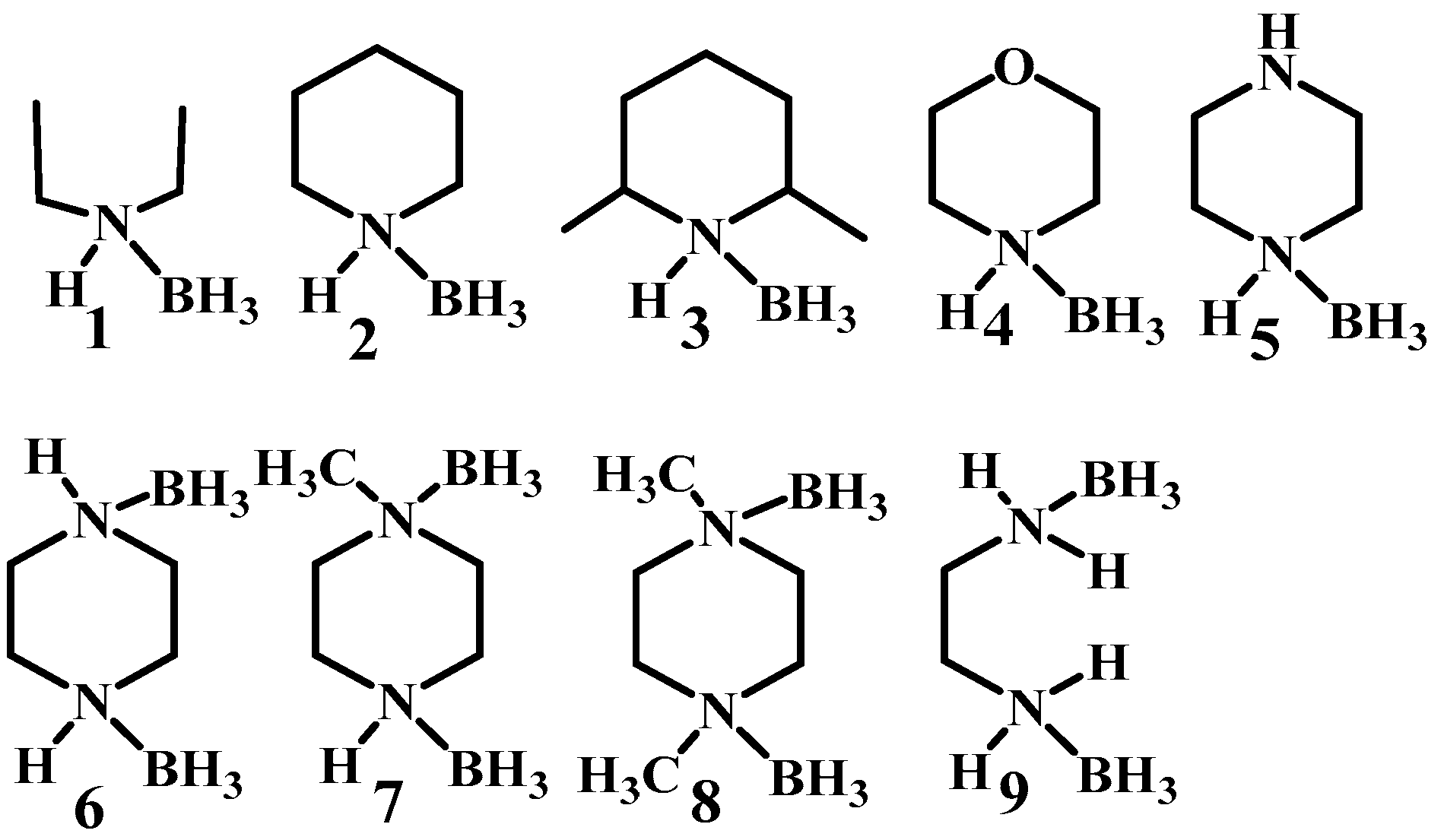
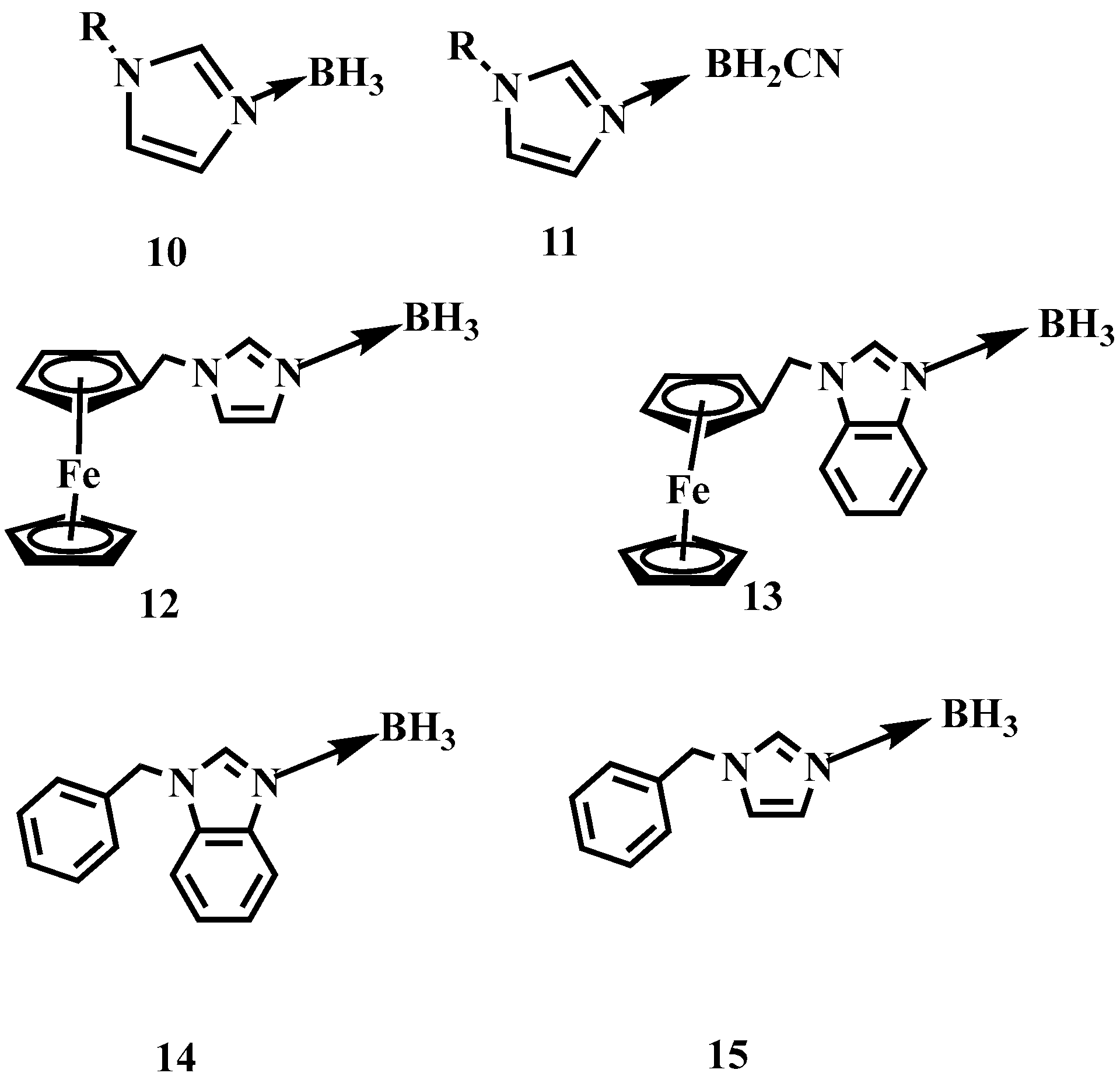
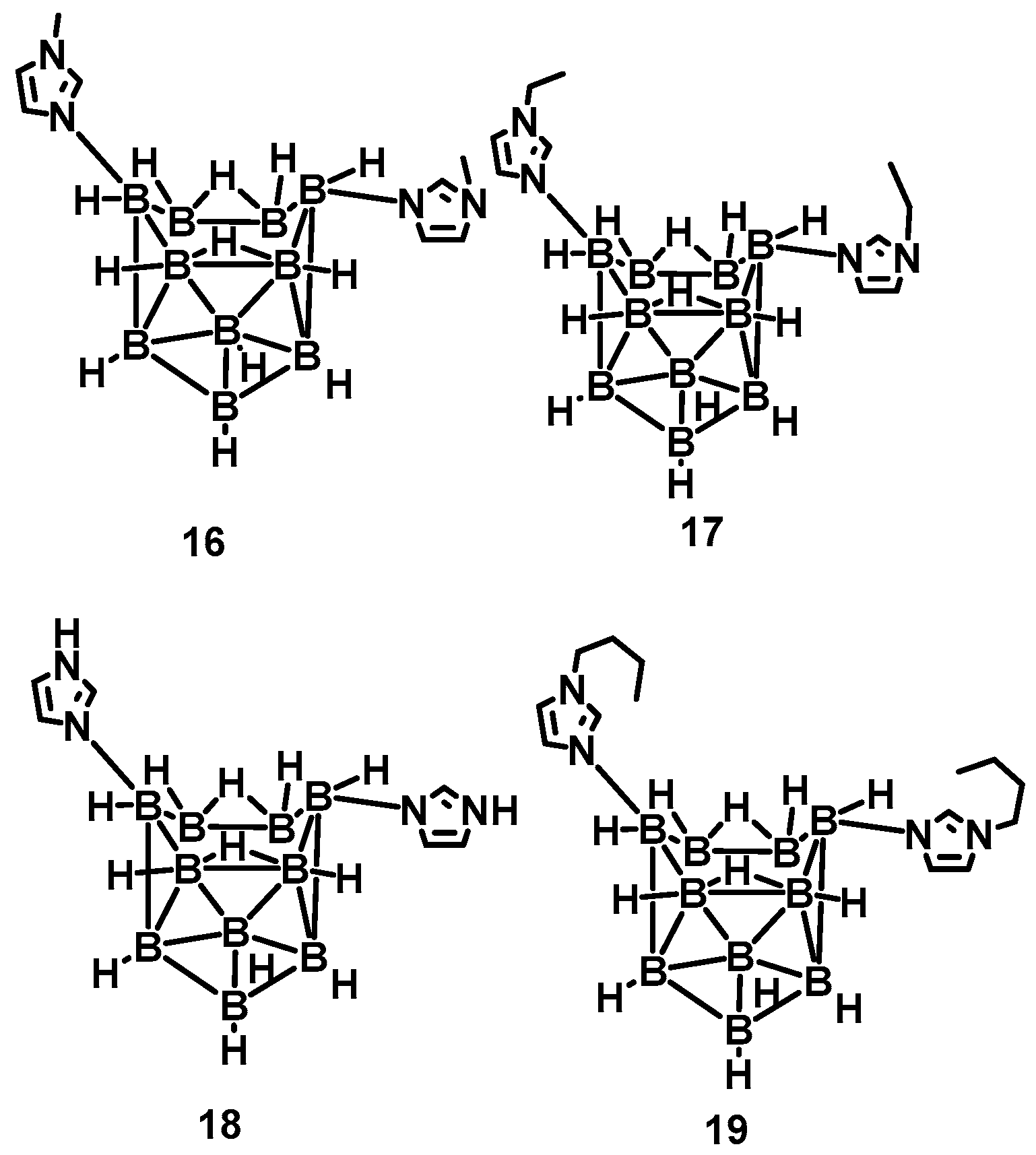

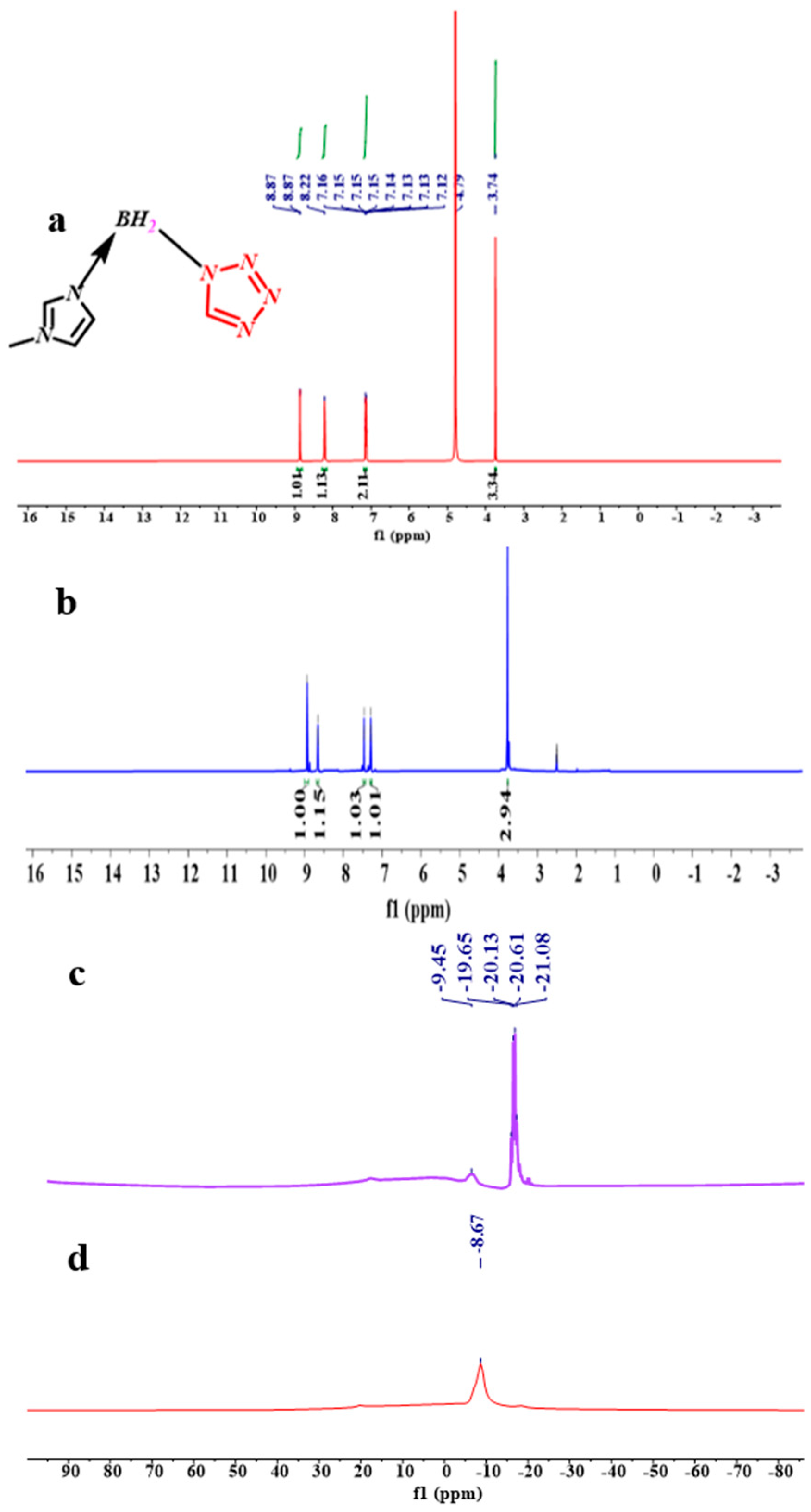
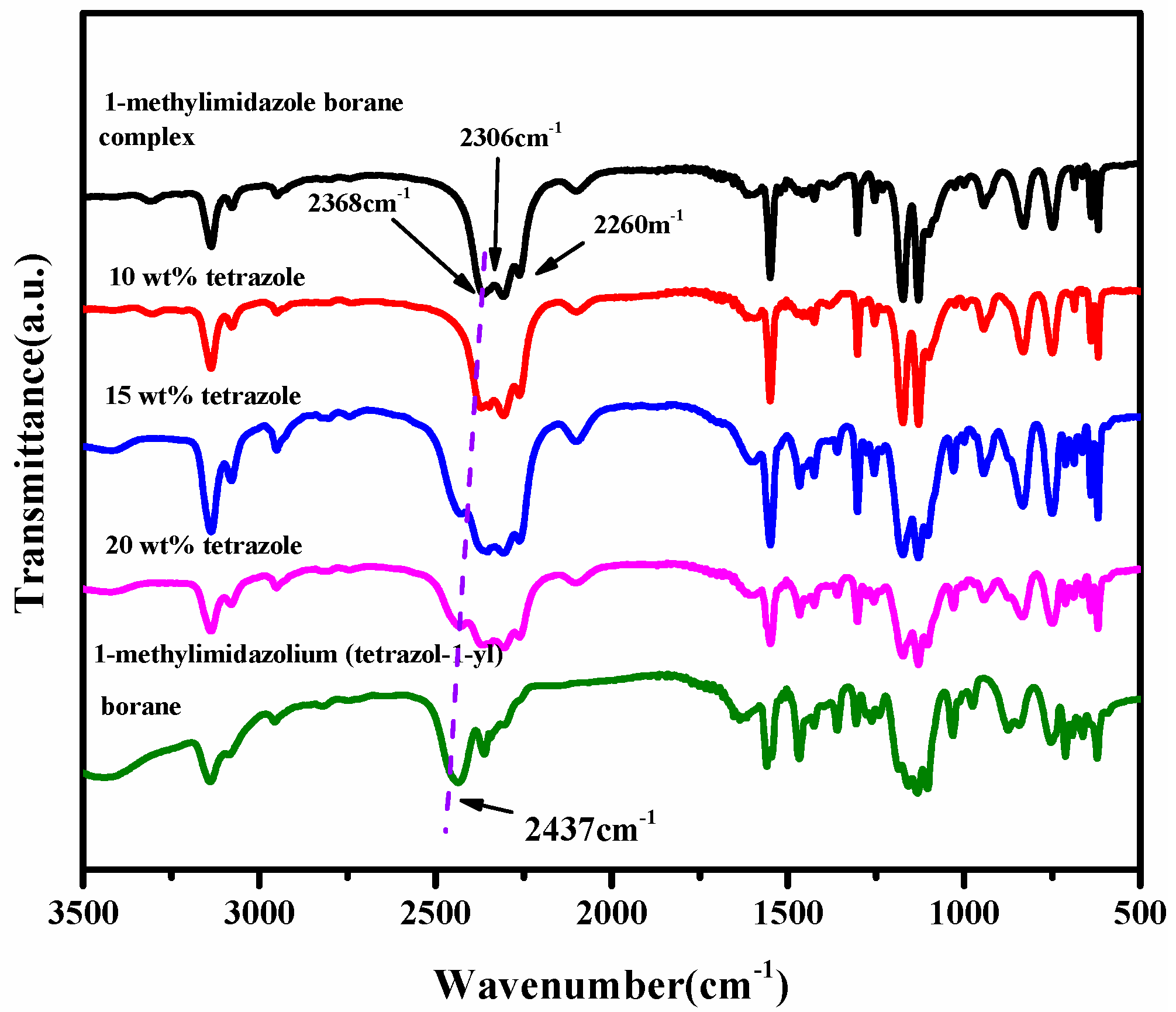




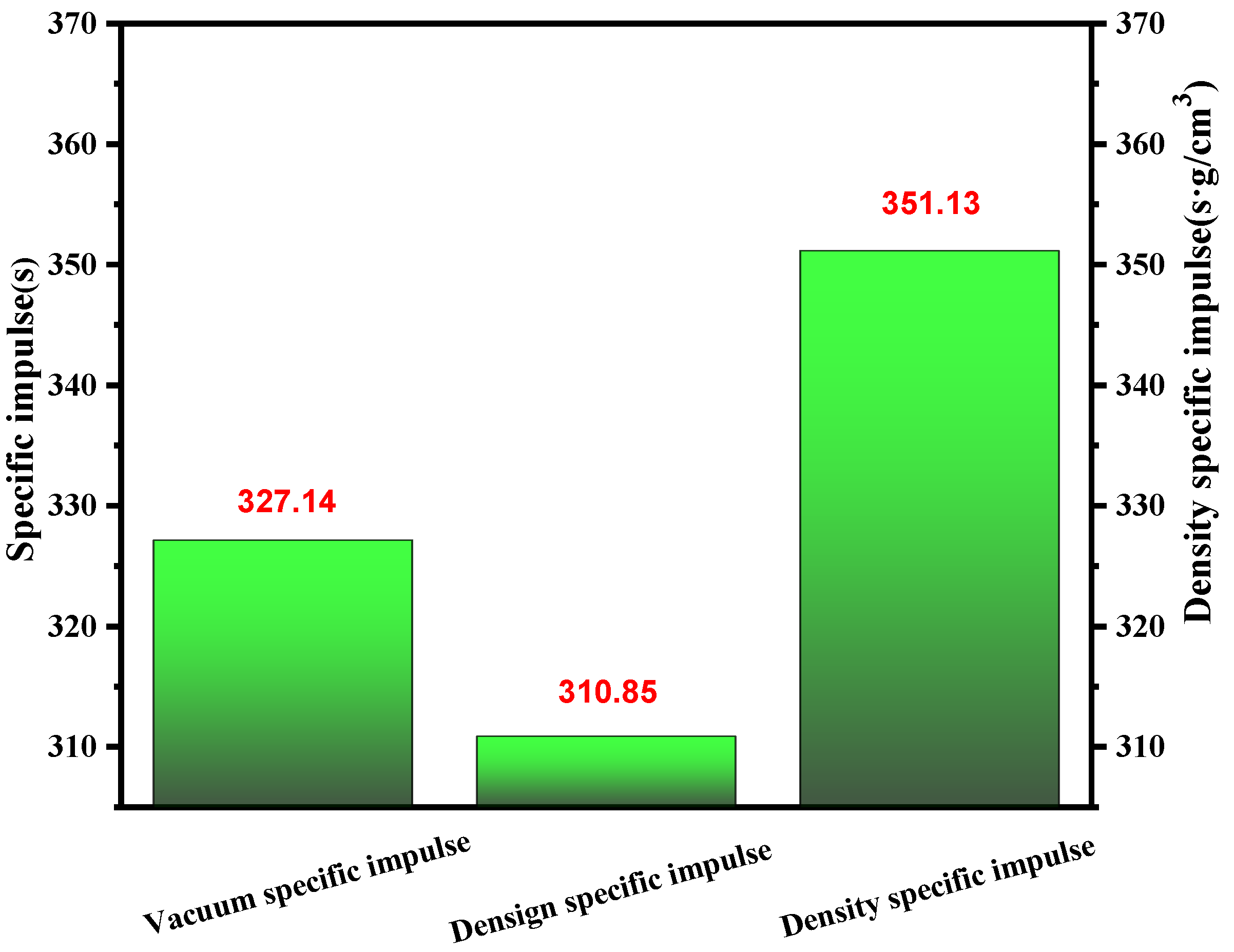
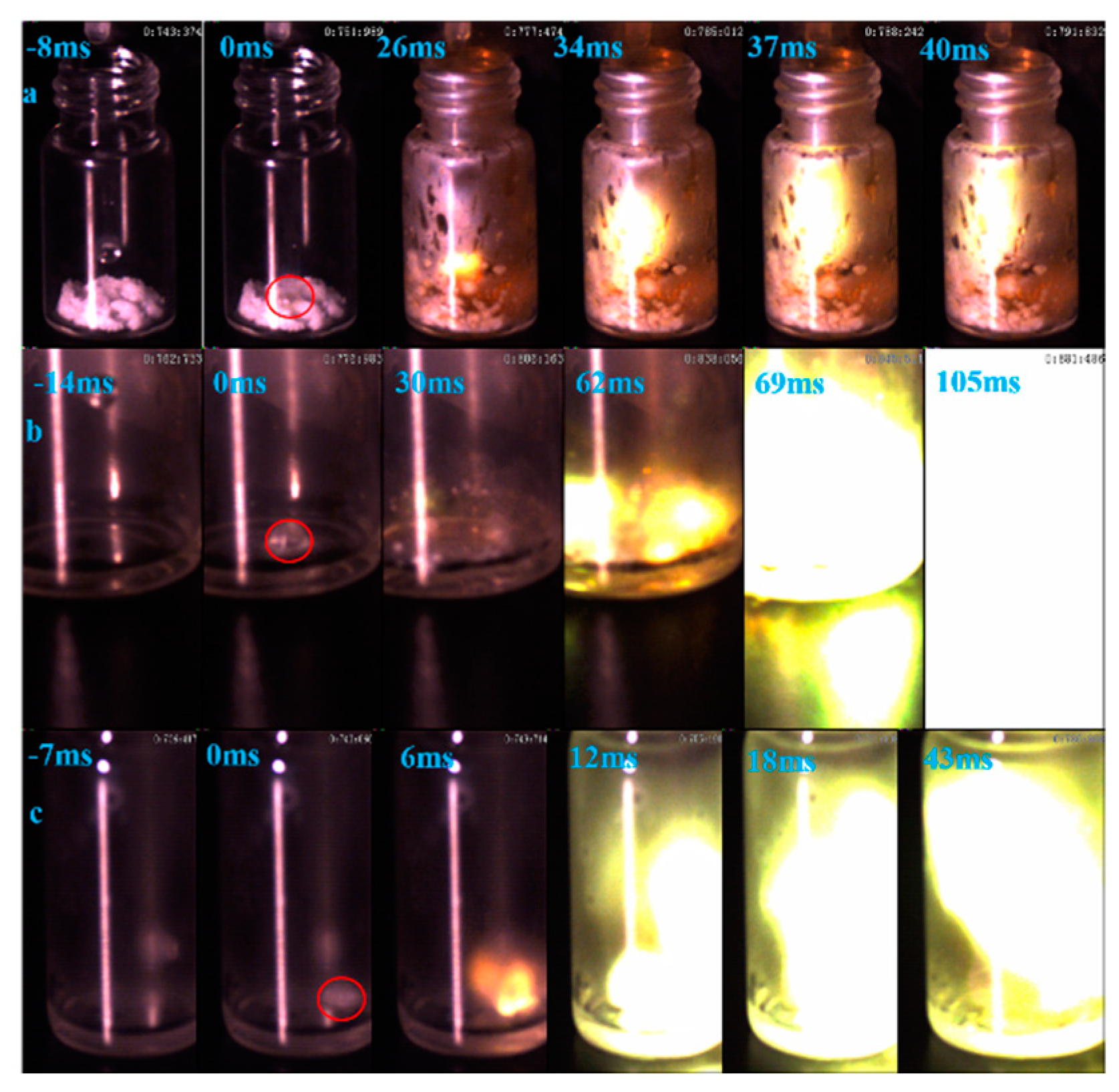
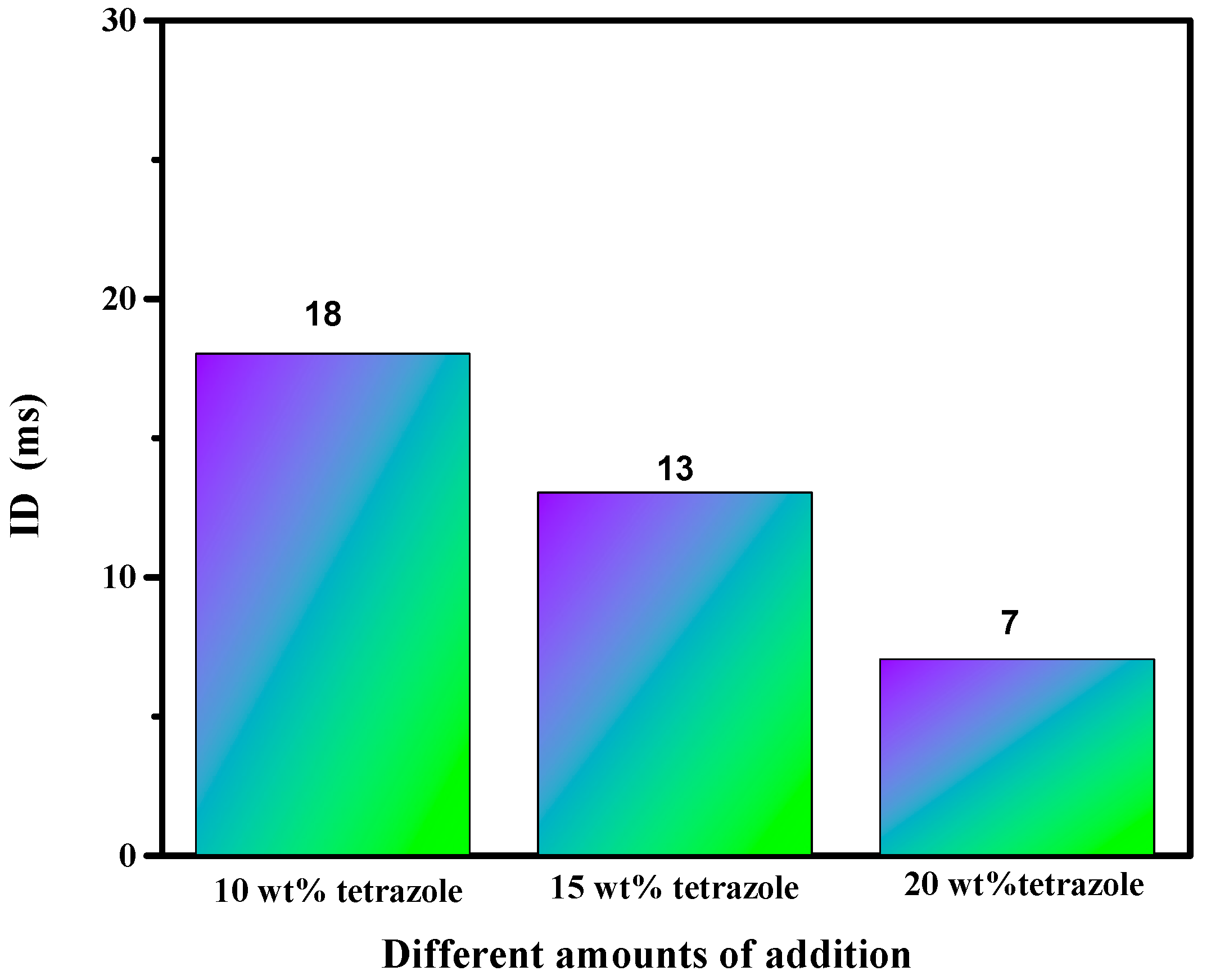
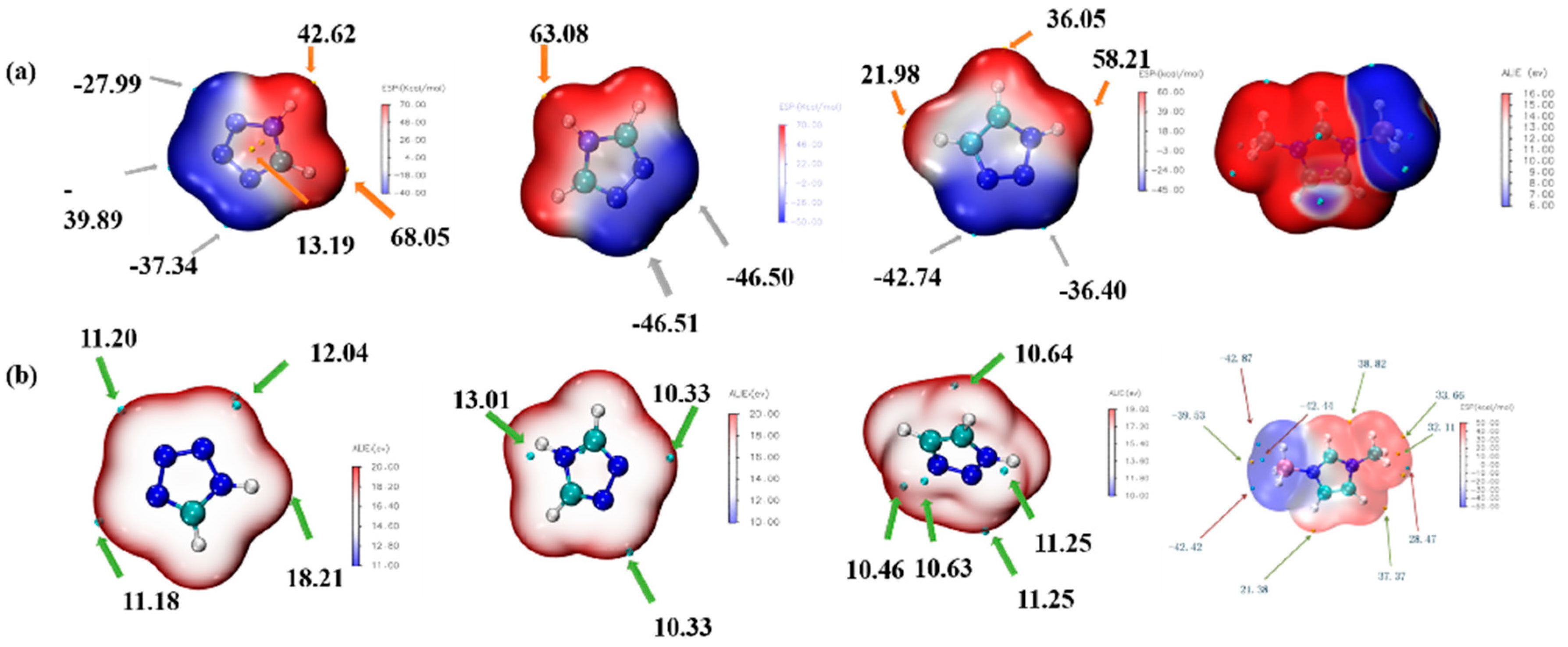

Publisher’s Note: MDPI stays neutral with regard to jurisdictional claims in published maps and institutional affiliations. |
© 2022 by the authors. Licensee MDPI, Basel, Switzerland. This article is an open access article distributed under the terms and conditions of the Creative Commons Attribution (CC BY) license (https://creativecommons.org/licenses/by/4.0/).
Share and Cite
Li, X.; Wu, J.; Fang, F.; Li, H.; Wang, L.; Wan, H.; Guan, G. Preparation of the 1-Methylimidazole Borane/Tetrazole System for Hypergolic Fuels. Molecules 2022, 27, 4466. https://doi.org/10.3390/molecules27144466
Li X, Wu J, Fang F, Li H, Wang L, Wan H, Guan G. Preparation of the 1-Methylimidazole Borane/Tetrazole System for Hypergolic Fuels. Molecules. 2022; 27(14):4466. https://doi.org/10.3390/molecules27144466
Chicago/Turabian StyleLi, Xue, Jun Wu, Fan Fang, Hongping Li, Lei Wang, Hui Wan, and Guofeng Guan. 2022. "Preparation of the 1-Methylimidazole Borane/Tetrazole System for Hypergolic Fuels" Molecules 27, no. 14: 4466. https://doi.org/10.3390/molecules27144466






